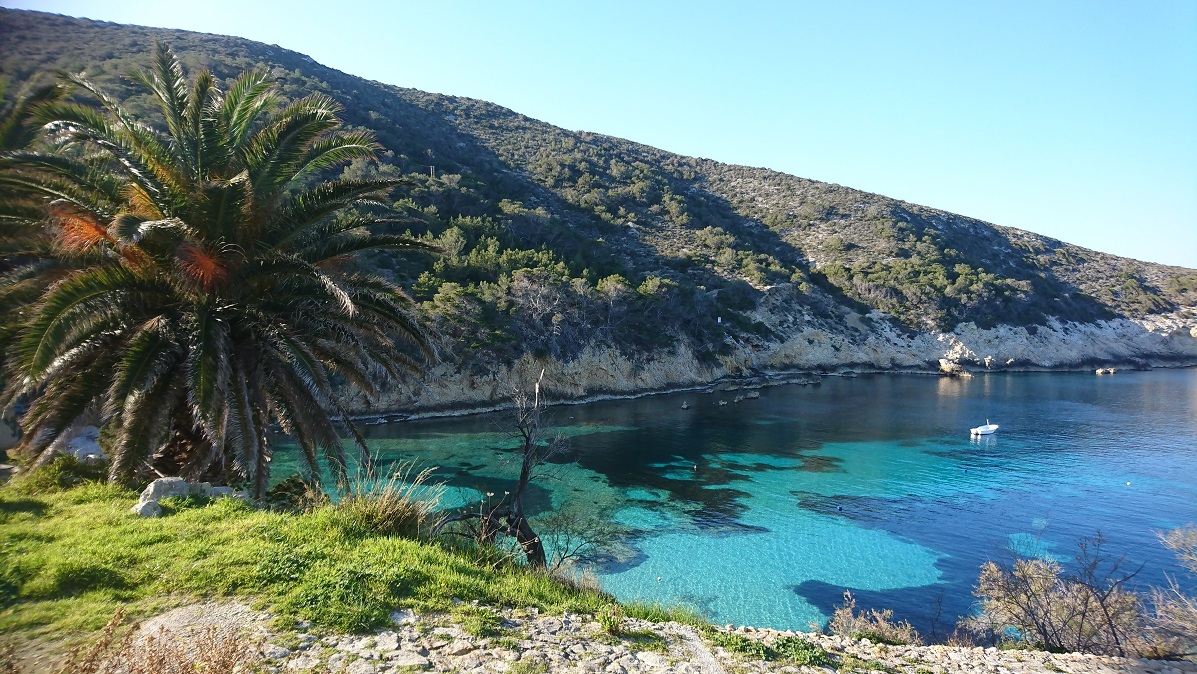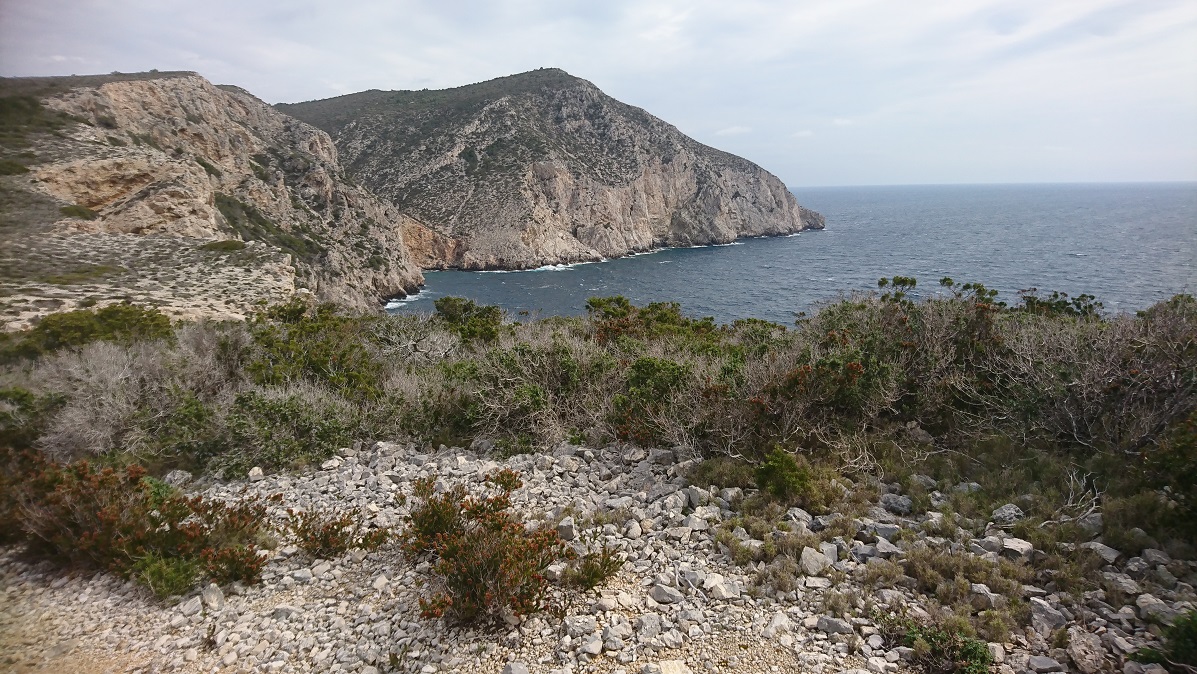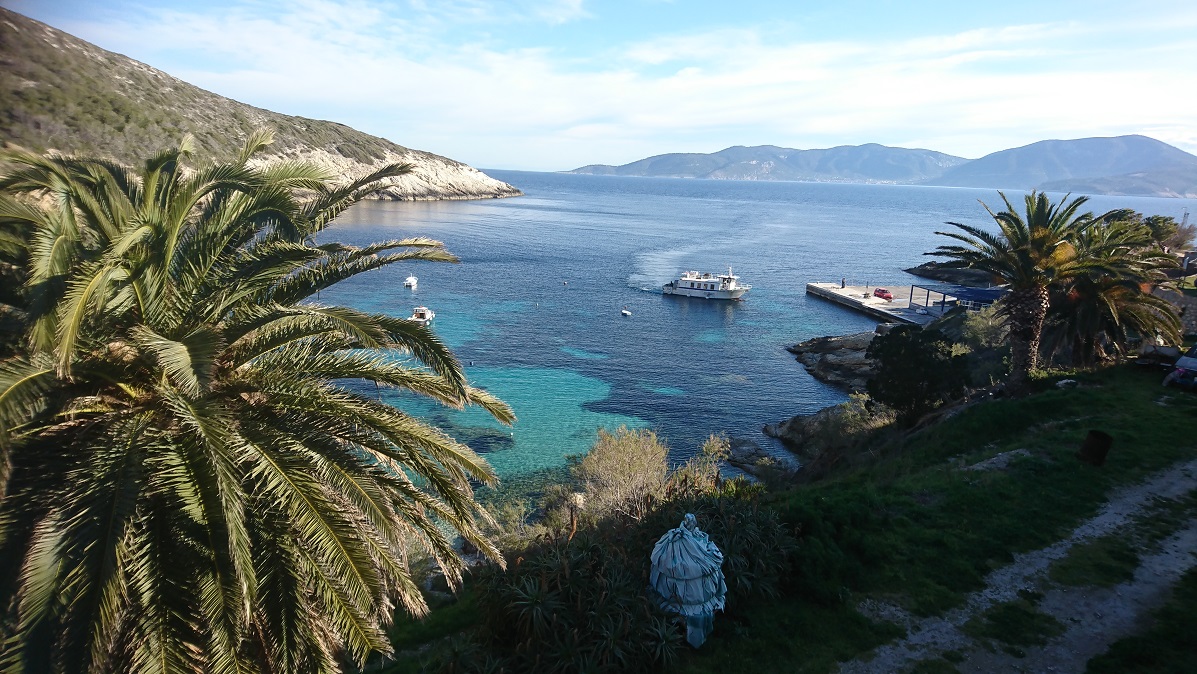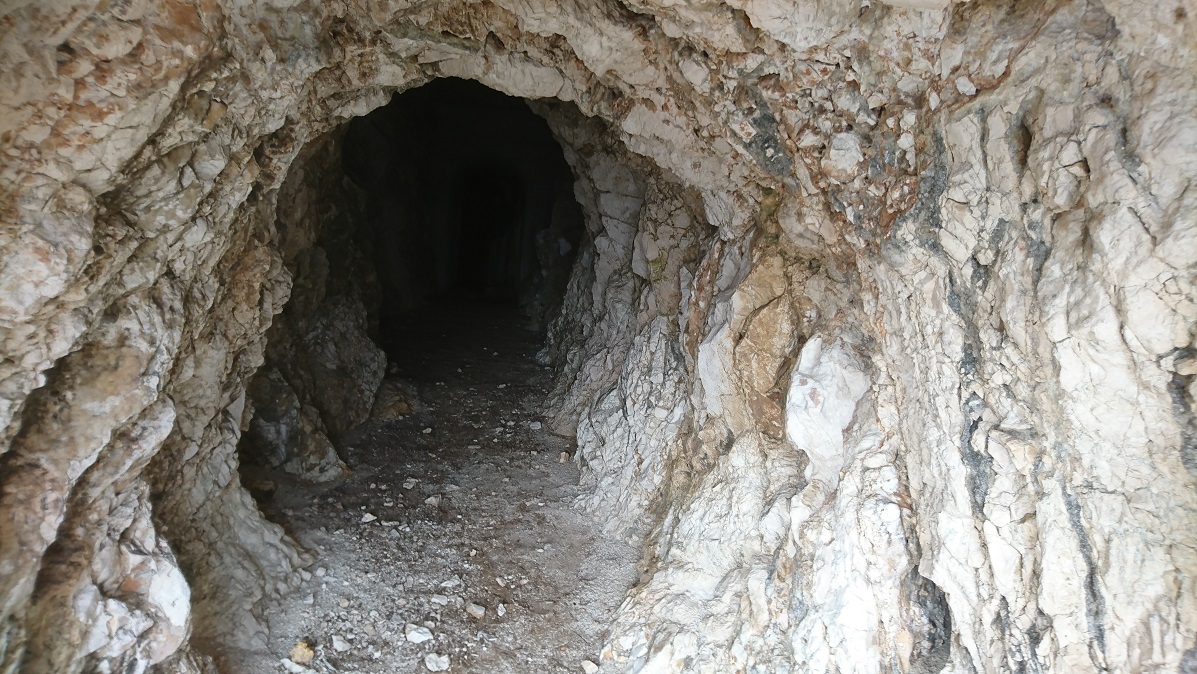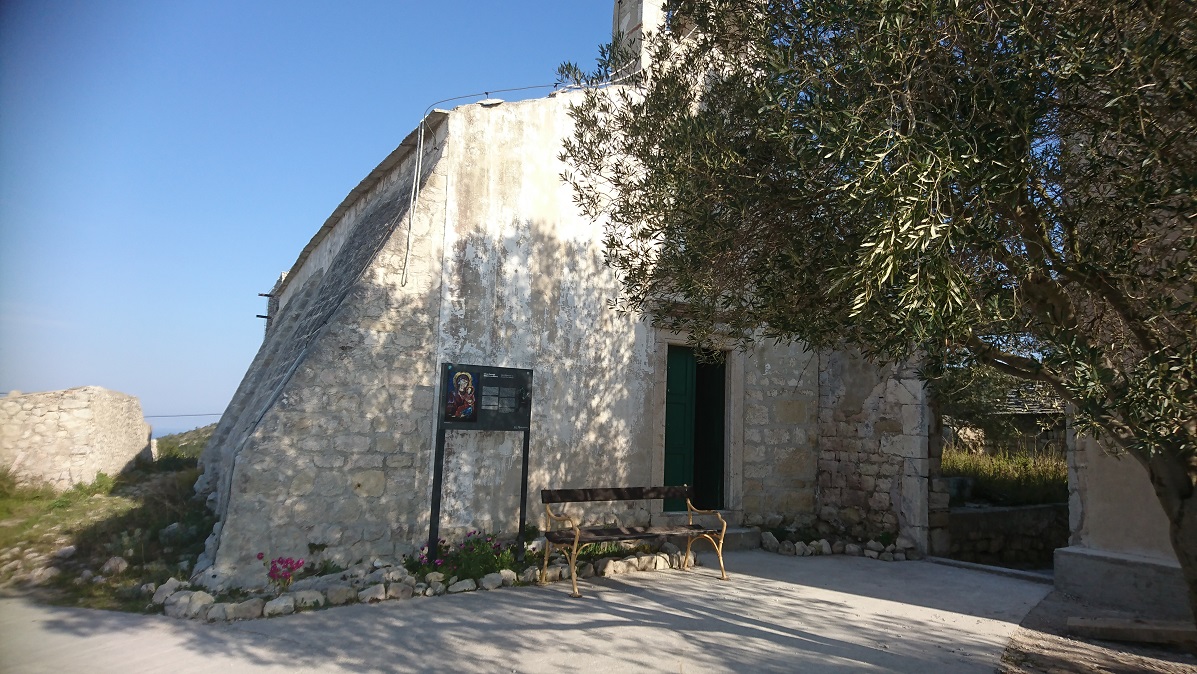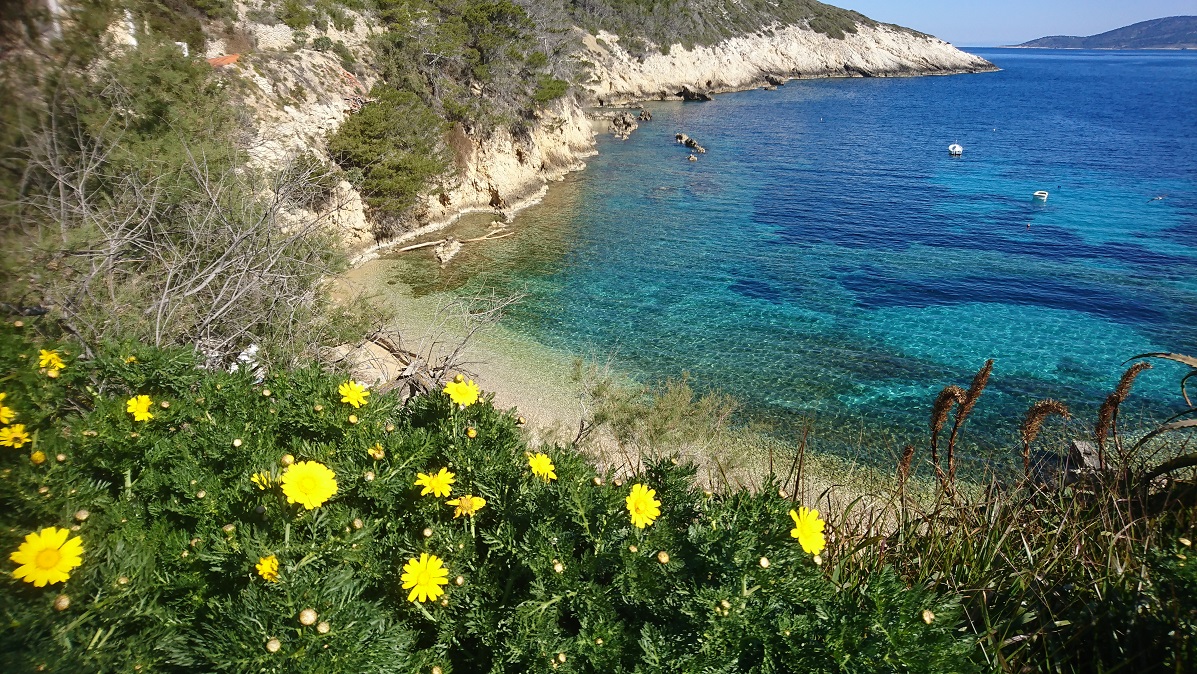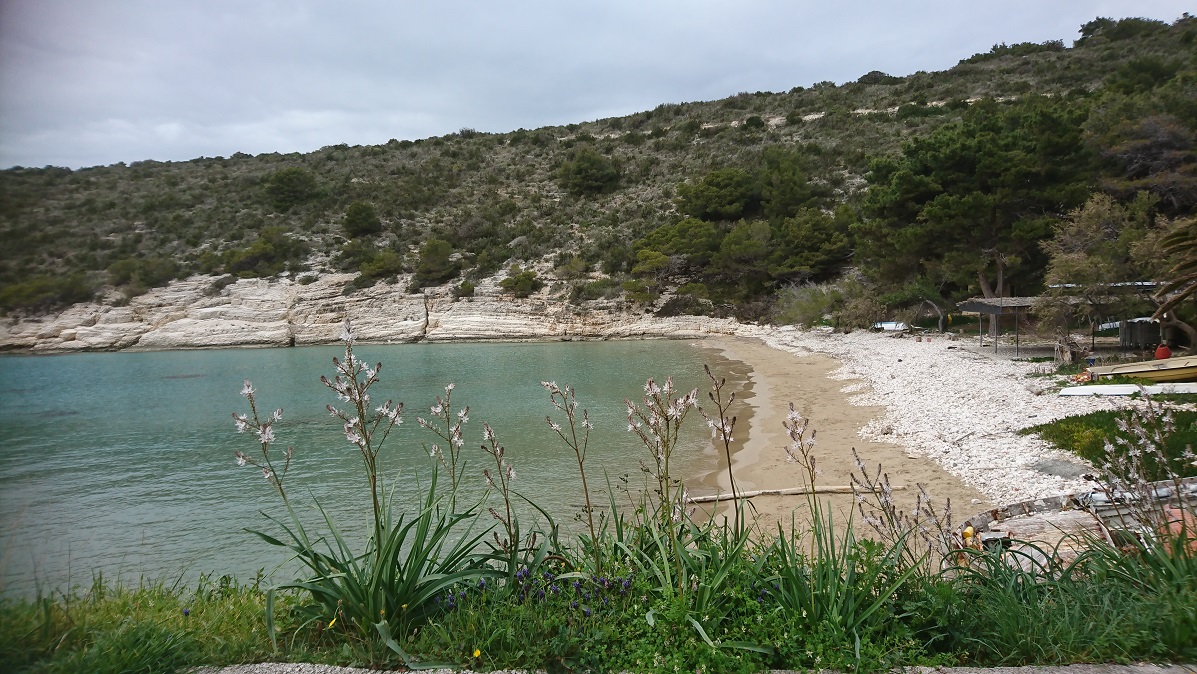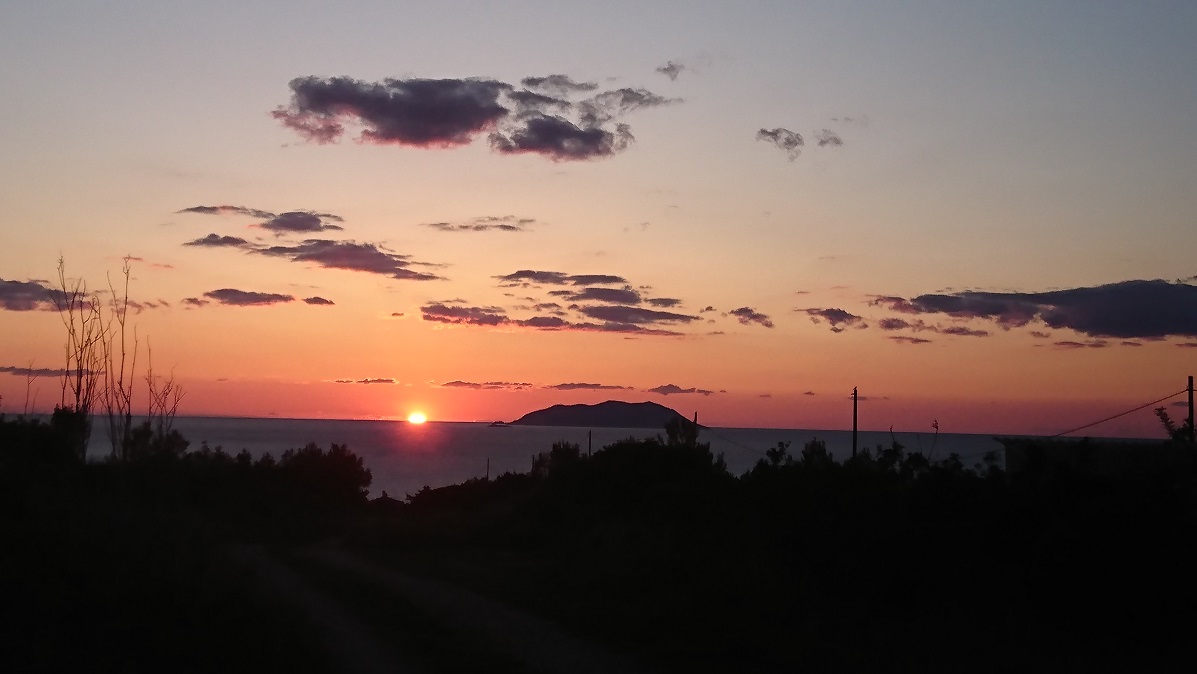Croatia Increases Sea-Fish Catch and Production
ZAGREB, 14 July, 2021 - Croatia increased the catch and production of sea fish and other marine organisms by 9% in 2020 compared with the previous year, while the value of fisheries rose by 10.4%, according to provisional data from the Croatian Bureau of Statistics.
The increase in the value of fisheries was due to the 11.6% rise in the value of sea fisheries, which in turn was driven by the 10.3% increase in sales.
A total of 66,535 tonnes of pelagic fish were sold last year, which is 7,054 tonnes more than in 2019, while the value of pelagic fish sold rose by 13.7% to HRK 518.2 million.
Also sold were 18,321 tonnes of other fish, their value reaching HRK 774.8 million, up by 13.5% compared with 2019.
The number of fishermen engaged in maritime fishing in 2020 fell by 0.4% to 6,582, and the number of fishing vessels decreased by 0.8% to 7,555.
The provisional data also show that the total production of freshwater fish in 2020 declined by 14.7% to 2,644 tonnes.
(€1 = HRK 7.48)
For more about politics in Croatia, follow TCN's dedicated page.
Journalist Clickbait Victim: The Curious Case of Mystery Fish on Korčula
June 2, 2021 - When TC editor Iva Tatić caught the fish nobody could identify, TCN reporter Ivor Kruljac jumped to action in the hope he will find a marine life scoop. But after the dramatic realization that Atlantic lizardfish is nothing spectacular, he became a journalist clickbait victim. Meet the mystery fish on Korčula.
It was early evening between 7 pm-8 pm on the eastern Korčula coastline on May 28. After a long week of handling the Total Croatia site, TC editor Iva Tatić decided to chill and went fishing. Instead of managing the multilingual site that brings you the best tips on how to travel and enjoy Croatia, she must've been happy with the idea she can enjoy in Croatia herself, as she was preparing two hooks – one with a squid and the other with the piece of bread. Marine life must be very humble cause instead of a squid (absolutely delicious, either fried or grilled and stuffed with swiss chard), the bread was the taken bait for the careless fish soul underneath the Adriatic surface.
Iva took the opportunity and caught its prey, but pretty soon, happiness for the catch was additionally spiced with curiosity.

the source of curiosity and happiness © Iva Tatić
„What the hell is this?“ Iva asked the local Korčula fishermen showing them her catch.
And „no idea“ was the consensus by other marine life hunters.
„Locals call it the spider“, said a local fisherman known as Pero to Iva. „It looks like Spiderman“.
Iva didn't feel that Spiderman is an accurate comparison, and as no one really knew the answer, the whole thing went online.
After Iva shared the photos of its catch on Facebook, the online jury narrowed the mystery to two possible suspects: Saurida and Atlantic lizardfish.
Still being new and wanting to gain recognition in the newsroom, I took on myself to investigate what exactly is this Aquaman-Spiderman-love-child. Perhaps it's something invasive, a threat to the lovely Adriatic, and a fantastic journalist story.
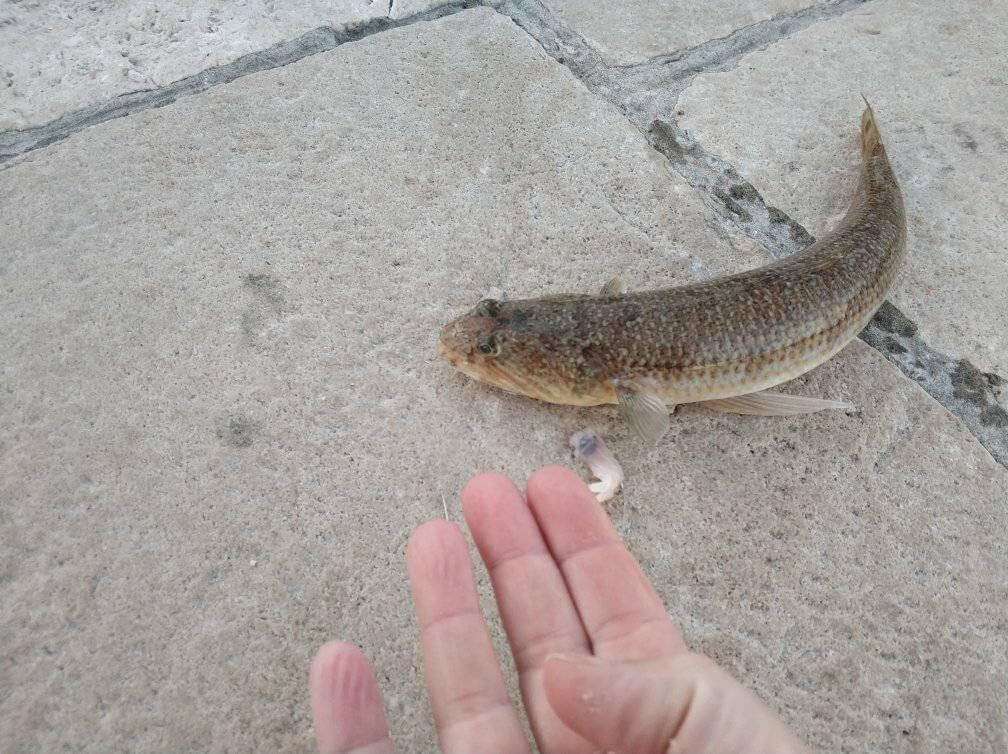
The case, the challenge, the scoop © Iva Tatić
Word on the expert street
A little bit of browsing through the pages of Rovinj Sea Research Centre (CIM), and a few calls, led me to the CIM Senior scientific associate, dr. Andrej Jaklin.
„It looks like Atlantic lizardfish, I saw that fish in person on Pelješac 15 years ago“, said Dr. Jaklin on the phone while looking at the images of the catch I sent him.
Jaklin's memory also seems fit with Pelješac being close to Korčula Island. Still, he said he can't really tell me too much about the fish and recommended it to me to contact dr. Marcelo Kovačić from the Natural History Museum Rijeka. However, dr. Kovačić, a curator for vertebrates, was on vacation, so the call was picked up by Milvana Arko-Pijevac, curator for marine invertebrates.
„I think this could be an Atlantic lizardfish, the head looks like it should, but I'm specialized for invertebrates, mollusks and shellfish“, said Silvana Arko-Pijevac.
So until that point, two experts for marine bio life are certain this is an Atlantic lizardfish (Synodus saurus). Fish, from Atlantic, I thought. Are we talking about an invasive species that manage to come to the northern dead-end of the Mediterranean all the way from the Atlantic? If so, is it hazardous to the domestic sea life of the Adriatic?
Despite recognizing the fish, neither Jaklin nor Arko-Pijevac couldn't say more details, but it's worth noting that the scientific community can once again serve as a role model to everyone who thinks they are experts on everything (both in Croatia but a trend we see spawn worldwide). Instead, my interlocutors accepted and pointed out the limits of their knowledge and suggested me someone who knows more.
Clickbait: It's not just for journalists anymore!
It took me a while to reach Dr. Jakov Dulčić from the Laboratory of Ichthyology and Coastal Fishery at the Institute of Oceanography and Fisheries in Split. First, he was not in the office, and later, he was at a meeting. But, with Arko-Pijevac's claim that Dulčić is the best ichthyologist in all of Croatia, it was worth the wait.
Finally, my mobile phone impulses from Zagreb caught dr. Dulčić in Split, and I excitedly asked him for help. To identify and say a bit more about the mysterious fish fishermen in Korčula failed to recognize, but is suspected to be the Atlantic lizardfish.
„I have to see the photos to say for certain“, said Dulčić.
„I already sent them to your e-mail before this call. Can you please refresh your E-mail?“, I asked with hearable excitement in my voice and suspense in my gut.
The suspense only grew as Dulčić was opening the e-mail.
„Found it!“, he said and I almost screamed out of excitement,
„Yes, indeed, that is the Atlantic lizardfish“, confirmed Dulčić with a relaxed voice while I was ready to ask tons of questions about this weird and possibly invasive species.
„But that is neither exciting nor anything special to catch in the Adriatic“, continued Dulčić with the same chilled tone.
I listened to that sentence with a blank expression fortunately, nobody has seen it except the walls in my apartment.
„You might think it's unusual in Croatian waters because of its name, but it's the normal fish that lives in Adriatic“, added Dulčić.
I couldn't help but think what a sour poetic justice. Being a journalist, a member of the profession in which some of my colleagues try to catch views by clickbait, to be hooked (pun intended) on a clickbait in scientific terminology.
„They can be found across the Adriatic sea, everywhere in Croatia. Their population used to be smaller in the previous years, but it recently got larger. It seems they have certain cycles, but it's nothing spectacular“, he concluded.
„But how come none of the fishermen recognized it?“, I asked puzzled.
„Interestingly enough, it is often caught, but it can rarely be seen on the fish market, and that's a place thanks to which you can usually recognize fish“, explained Dulčić.
However, informing and educating fishers and the general public about marine life in the Adriatic is something dr Dulčić and the Oceanographic Institute are very dedicated to.
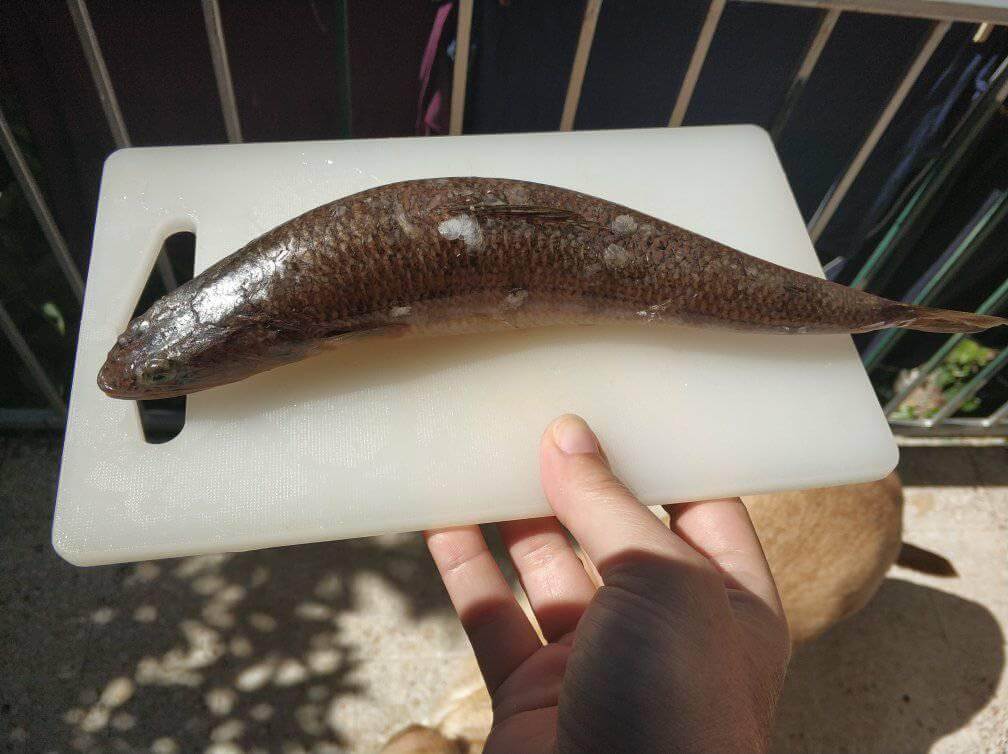
Presenting you the Atlantic lizardfish © Iva Tatić
This is evident by the LEKFishResCRO project.
„This project will address the need to improve knowledge on the trends in Adriatic fisheries with novel methods as well as to acknowledge recent changes in fish biodiversity in a complex Adriatic ecosystem. The central objective of the project will be to evaluate the potential use of the LEK in developing the knowledge base for fisheries management and conservation. The strategy employed for this evaluation will be a two-way discussion between fisherman and other stakeholders from one side and fisheries biologists from another side around the subject of what sorts of indicators of ecosystem health would make sense in light of both the LEK of the fishers and the research-based knowledge (RBK) of the fisheries biologists“, says LEKFishResCRO website, and with loads of materials, you can check yourself.
„We collaborate well with fishermen, we work on their education, and with their tips and images they sent from the field we quickly gather research data“, explained Dulčić.
The invasive species are legitimately a threat to Adriatic, and it comes from the Red Sea through Eastern Mediterranean, but these examples are excellent topics for some other articles.
In the meantime, the mystery fish is identified as a mainstream species in the Adriatic. Somewhat newsworthy (maybe?), but this time my ship returned without a scoop from the stormy cruise in the sea of information.
I sent a message to Iva explaining what she caught (which she already found out on her own, she is a good journalist after all), and I only confirmed that she can unfreeze it and eat it safely. Additionally, I found this recipe at least.
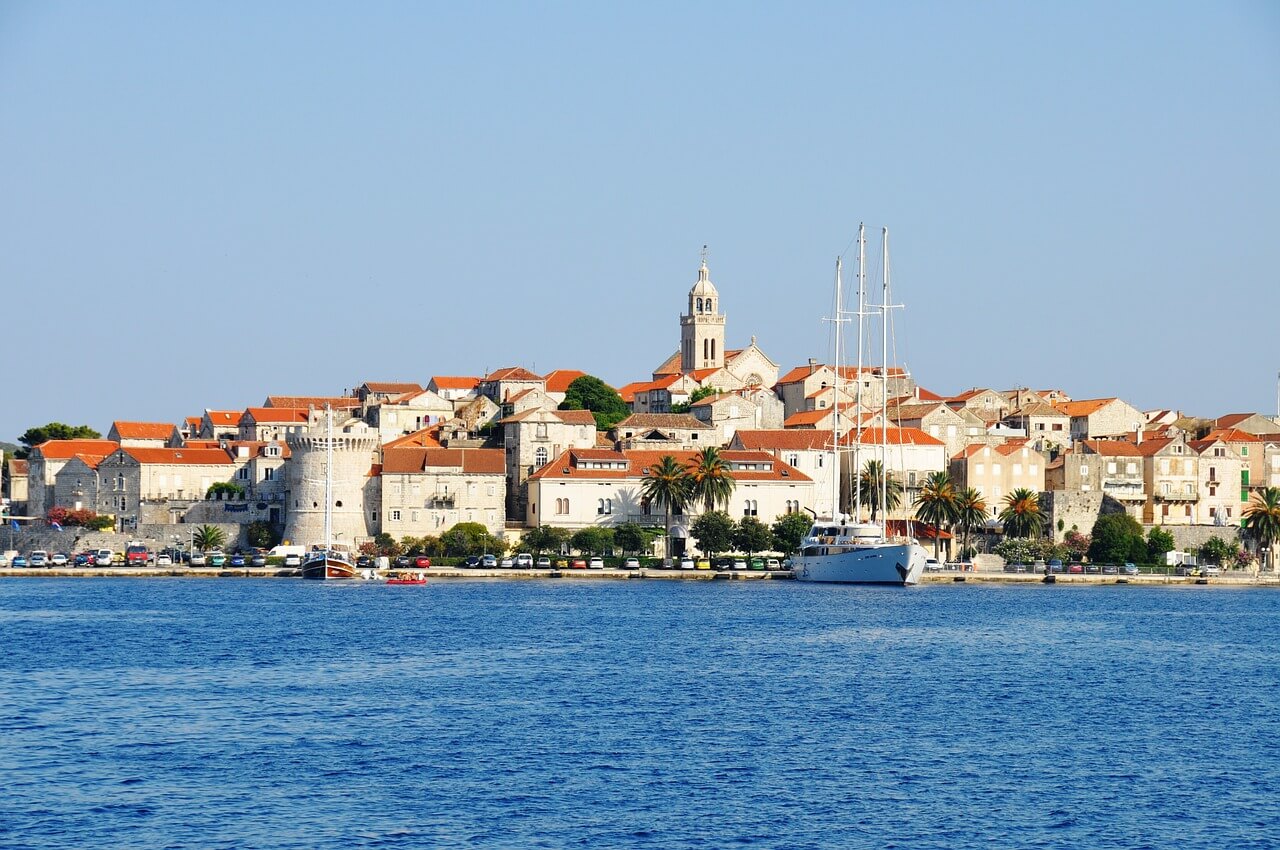
Korčula and Adriatic Sea, Pixabay
Enjoy the Adriatic, but respect marine life
In an attempt to conclude this investigative piece (let's pretend it is one, please) on a socially responsible and eco-friendly note, I asked dr Dulčić if there are any type of fish tourists and locals shouldn't fish because it's on the verge of extinction and if caught it should be returned to the sea immediately. „Such fish is living in areas and conditions where you can't catch it with hooks or nets. But Do not dive out noble pen shells (Pinna nobilis), or disturb mammals such as dolphins. And be careful around sharks and jellyfish“, concluded dr. Dulčić.
Learn more about Korčula on our TC page.
For more about science in Croatia, follow TCN's dedicated page.
Noble Pen Shell in Croatia: Living Specimen Found Close to Lastovo Island
May 29, 2021 – Close to Lastovo Island in the Dubrovnik archipelago, a local fisherman discovered a living specimen of the noble pen shell in Croatia.
The title of this text would not be very interesting just a few years ago. Noble pen shells are some of the most beloved bivalves of the Croatian part of the Adriatic. They are popular with scuba divers and snorkelers because of their impressive size and beauty. Unfortunately, last year saw a massive dying-off of noble pen shells in Croatia.
It started five years ago in Spain. The mysterious disease killed off almost the entire population of noble pen shells in the Mediterranean. Tportal reports, Croatian Veterinary Institute (HVI) is researching the causes of the ecological disaster. A parasite called Haplosporidium pinnae in combination with micro bacteria is the most likely culprit. According to Zeljko Mihaljevic, pathologist and epidemiologist of HVI, this discovery is very reassuring. The Southern Adriatic seems to have lost virtually its entire population of noble pen shells. Any surviving specimens are very interesting to observe. They might have immunity that is potentially very important for the continuation of the research.
Observe and Report
He also went on to ask anyone who spots any noble pen shells in the Adriatic to check if they are alive. Simply passing your hand over the shell should make it close. It is sensitive to the commotion in the water. Any living specimen should be reported to the Ministry of Economy and Sustainable Development. Their central contact number is +385 1 3717 111.
Noble pen shell, also known as fan mussel, can be over a meter in length. They usually grow upright on sandy bottoms. It is endemic to the Mediterranean region and the biggest bivalve in the Adriatic. They are a good indicator of sea cleanliness. The Croatian government is enacting a program that aims to slowly re-establish the population of noble pen shells. It will not be an easy nor a quick process. Diving lovers in Croatia are hoping to once again enjoy the view of these darlings of the Adriatic.
For more about lifestyle in Croatia, follow TCN's dedicated page.
Rovinj Sea Research Centre Celebrating 130 Years of Work
May 18, 2021 - The Rovinj Sea Research Centre turns 130 in 2021. It is the place in Croatia for oceanographic research and all things science related to the preservation of the sea and maritime life.
Established back in 1891 as Berlin's Aquarium Zoological Station, the research Institute is known today as the Rovinj Sea Research Centre (CIM), and last week it celebrated 130 years of work. An affiliate of the Ruđer Bošković Science Institute (IRB), that institute recently reported that CIM currently has 54 employees working in four laboratories, and the centre is heavily involved in numerous impressive scientific projects.
''This includes five projects of the Croatian Science Foundation (HrZZ), worth 5,855 635 HRK, three projects financed within the INTERREG cross border programme (worth 1,326 000 euros), three projects with European structural and investment funds (7,189 531 HRK), and two projects financed within the EU programme for research and innovations, OBZOR 2020, valued at 179,360 euros,“ says the IRB official website.
The section of the IRB page dedicated to CIM adds that the centre offers a multidisciplinary take on the research of the sea, offering both basic and applicable oceanographic research. This includes six areas of interest: processes and dynamics in the food chain, examining the dynamics of water masses, ecology (species and the interrelations of species in both clean and in polluted waters), sea organism research (ecological, physiological, and genetic features of organisms, and a pollution effects study), the monitoring of pollution and sea quality, and finally, the monitoring of eutrophication (a process in which the environment becomes enriched with nutrients which can trigger the development of algae and cause an imbalance in the ecosystem).
Set in the beautiful town of Rovinj on the Istrian peninsula because of the clear waters of the Adriatic sea, CIM is on a mission to preserve marine life and its biodiversity.
CIM truly has a rich tradition, having conducted international systematic research and monitoring of the marine ecosystem of the Northern Adriatic for over 30 years. ''This approach became a model for the regional organisation of the European systematic monitoring of the coastal sea,'' says IRB.
IRB adds that in this long tradition, the Croatian science programme of monitoring the Northern Adriatic played a huge role. Having begun fifty years ago, it developed into the Jadran Project, making Croatia one of the first countries in all of Europe to have developed a systematic approach to the monitoring of the sea.
''Additional confirmation of the tradition and scientific quality of CIM can also be seen in the recent joining of CIM to JERICO – the Joint European Research Infrastructure network for Coastal Observatory, making CIM a partner of some of the most famous European Institutes“, concluded the IRB's explanation.
Learn more about Beaches in Croatia on our TC page.
For more about science in Croatia, follow TCN's dedicated page.
From Warsaw to Bisevo: Meet Beata and Her Amazing Life on the Adriatic
April 30, 2021 – TCN recently talked with Beata Przybyszewska Kujawa from Poland who moved from Warsaw to Bisevo island and started a new, significantly different life. As she says, the Adriatic impresses her and she is enjoying her new island life. She sees the greatest potential in eco tourism in Croatia, and her dream is to open a Biševo Museum. Here's her full story.
You believe that the Adriatic Sea and its coast had healing properties for you because you managed to solve some health problems you had by coming to the Adriatic. Other people have confirmed the same. What thrilled you the most in Dalmatia?
I first came to Dalmatia, more precisely to the island of Hvar, during a tour organised by the ORBIS travel agency back in 1980 – back in the times of the former Yugoslavia. I remember walking along the shore from the Sirena hotel towards Hvar Town. I saw the sunset illuminating the white stone houses, surrounded by palm trees and the calm, sparkling surface of the sea. I felt a rush of emotions coming over me, and, for the first time in my life, I started crying with delight.
From that moment on, I started travelling around Croatia very often, and it was Dalmatia, and especially the islands, that delighted me the most. I want to add that I have visited many countries across the world: the USA, Canada, Russia, Ukraine, Tunisia, Sweden, Denmark, Switzerland, France, Austria, Italy, Romania, Bulgaria, and Greece, but Dalmatia is my place on Earth, and here I feel the best. I consider the Adriatic Sea to be the most beautiful in the world, not only for its aesthetic beauty but also thanks to the health benefits it provides.
Mezuporat on Biševo
I have felt on my own skin many times that swimming in the Adriatic Sea is an irreplaceable therapy that strengthens my health and immunity. Thalassotherapy – sea therapy, hundreds of bioelements and minerals dissolved in the sea, the sun - a source of natural vitamin D3, clean air, the Mediterranean vegetation – all of these are indispensable factors necessary for our health.
Surprisingly, I 've noticed that the locals often don't take advantage of these benefits of nature and what they have at their daily disposal! They rarely swim in the sea. They consider it an activity meant for tourists who rent apartments and are essential for their household budgets.
Up to this day, I'm still delighted with the Dalmatian climate, the combination of flora and fauna, the sea, and the mountains. I'm captivated by the colurs and the clarity of the Adriatic Sea, all the indescribable scents, an aromatherapeutic cocktail of rosemary, lavender, Mediterranean pine, salt, and algae. All this is intertwined, giving a person what they need, but if only they want to take advantage of its benefits.
Gatula on Biševo
You're interested in spas and wellness, as well as in nature and plants. What do you consider to be the greatest natural treasure in the Adriatic Sea? What do you think, what do we have, and what else is needed for so-called wellness tourism?
In Poland, I'd been actively promoting a healthy lifestyle for over 25 years. I hold a Master's degree in public health and diplomas in the fields of cosmetology and health promotion. I had my own publishing house, which had been publishing the "Gabi. Net - Estetyka & Zdrowie" magazine for over ten years. I've organised over 180 congresses, training sessions and workshops on a healthy lifestyle, spas, and wellness. I was a consultant in this field for many hotels and wellness centres.
Here in Dalmatia, there's a massive potential in the area: there are hundreds of plants, herbs, natural substances, and ingredients that can be used in pro-health and anti-stress therapies in the SPA and Wellness industry: for massages, peelings, inhalation, baths. For seniors who have problems with their sleep, walking, or bad joints, business people who are often too stressed out, people who are obese and those recovering from various illnesses.
Mezuporat Bay on Biševo
Now, during the coronavirus pandemic that is doing damage to our respiratory system, we must pay attention to the body's oxygenation, proper, deep breathing, as well as room ventilation. Gymnastics, outdoor yoga, swimming, and the intentional use of the sun are very important in supporting our immune system.
Therefore, I see the greatest potential in so-called eco tourism – being among nature, with an active form of rest, immersed within nature and all of the gifts it provides.
Porat Bay on Biševo
You're also interested in culture and you think that there is excellent cultural potential in Dalmatia. What do you think, how would it be possible to develop it?
During my last six years in Warsaw, I worked as a culture inspector in the Mokotów district. I organised concerts, exhibitions, and other cultural events. I was also the president of the Polish-Croatian JADRAN Association. Among other things, we were focused on cultural contact between our countries. As such, we organised Croatian Culture Festivals in Warsaw, where we hosted musicians such as Parni Valjak, Goran Karan, Ana Rucner, and 'klapa' groups from the islands of Šolta and Brač. These events were exciting, promoting both Croatia's culture, art, and cuisine.
Dalmatia has excellent cultural potential. Its unique, ubiquitous music and ancient architectural heritage are the elements that, in my opinion, create its strongest points. International music meetings and making music together would be an exciting idea.
For example, during one of the Croatian Festivals, two female music groups joined together: the Polish band Służewianki and the Croatian 'klapa' group Čuvite from the island of Šolta. These ladies sang the song "Mariana," together, which is well known both in Poland and in Croatia. It's similar in the realm of poetry. I think organising international poetry meetings would make for a great experience.
For example, on the island of Šolta, in Nečujam, where Krzysztof Kamil Baczyński, one of the greatest Polish poets, stayed twice during the summers of 1937 and 1938, it turned out he stayed in the very same house in which the great father of Croatian literature, Marko Marulić, wrote the poem "Judita." This beautiful stone house is still standing there, begging for renovation. On its facade hangs a plaque dedicated to Marulić, and in front of the house, there is a plaque made of white marble in honour of Krzysztof Kamil Baczyński.
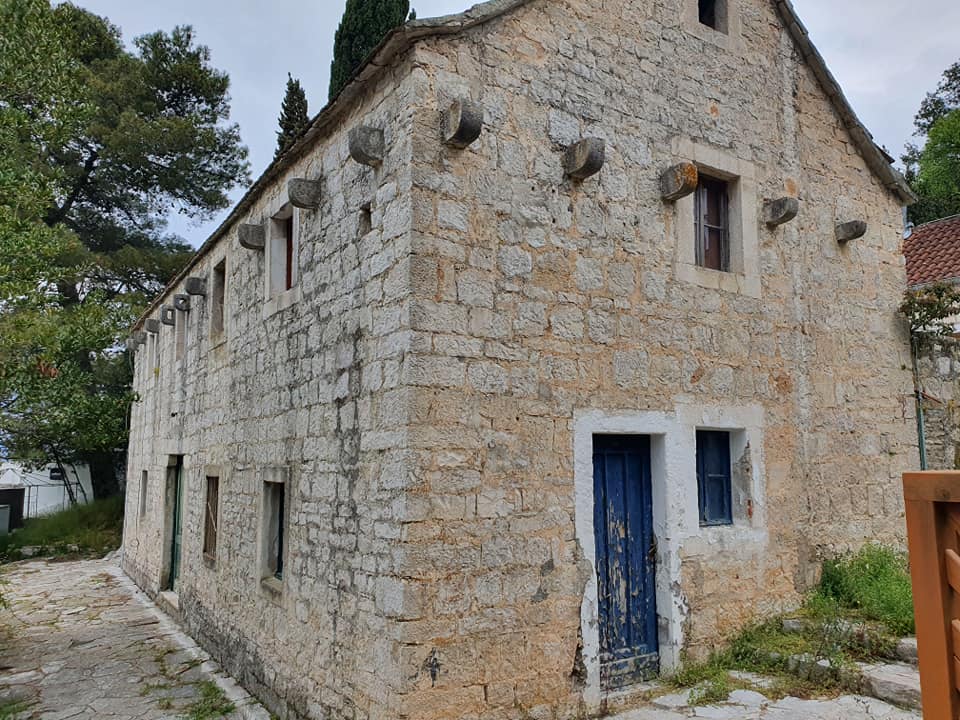
The Marko Marulić residence in Nečujam on Šolta, pictured on April 26, 2021 by Damir Jerčić, taken from the Naš Nečujam Facebook group
In the nearby church of St. Teresa, in Rogač, there is also an impressive plaque in honour of Marshal Józef Piłsudski, who in the 1930s was a model and great authority in many countries. Piłsudski also visited the Dalmatian coast, and also went to Opatija.
It would be great to establish memorial rooms for both of those great poets in this extraordinary house in Nečujam on Šolta and to organise regular poetry meetings. Another reason for that is that the great Croatian poet, Vesna Parun, also used to stay and now rests on the island of Šolta.

Nečujam on Šolta / Šolta Tourist Board
As you said, your greatest wish is to open a museum of "everything that was thrown out by the Adriatic Sea" in Biševo. What would be the theme of the museum? When can we expect this project to be realised? Are you already taking any steps?
My first artistic venture on the island of Biševo, where I've been staying since January this year, was painting stone Easter eggs, called 'pisanki' in Poland. I decorated a dozen of them and gave them to the island's inhabitants, along with my warmest Easter greetings. That was a way for me to meet and introduce myself to them.
Around a dozen people are living here permanently. In summer, more people come from the neighbouring island of Vis, not to mention the thousands of tourists who visit Biševo mainly to see the exceptional Blue Cave.
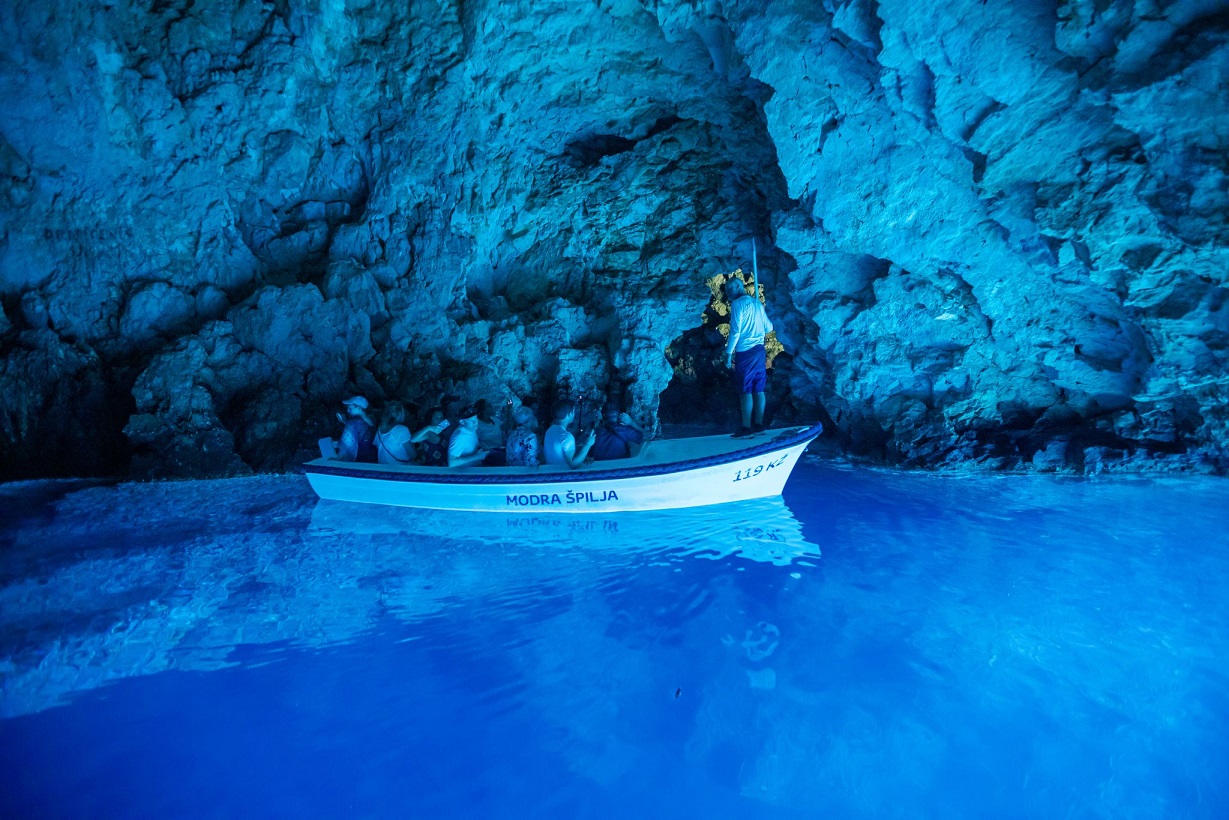
Blue Cave on Biševo / Romulić and Stojčić
As part of the 'Kamen i Krš' project, a former school is being expanded and rebuilt as a tourist facility with a restaurant and cultural attractions meant for visitors of the Blue Cave. There are more tourist attractions in preparation – the "Bear Cave" and also a system of underground tunnels from World War II, which may serve as a space for the organisation of, for example, natural or historical exhibitions.
Tunnels from World War II on Biševo
Before Easter, in the tiny, unusual, ascetic church of St. Sylvester from the 11th century, I made the installation of Christ's tomb from stones and linen that I found on the beach. Also, a crown of thorns was made of the roots and plants brought by the sea. Locals joined me in these activities, and we shared a beautiful holiday, both in the spiritual and "bodily" sphere, preparing Easter treats from both Croatian and Polish cuisine together.
Church of St. Sylvester from the 11th century
I love to paint, draw, create compositions from stones, plants, grass, and plant fibers. I often go to the nearby beach and collect what the sea brings me: pieces of glass, pieces of wood "polished" with the sea salt, interestingly shaped stones, shells, and cones. I then create various compositions from them; I just need to get the suitable glue and other necessary materials.
An installation that Beata made of stone for Easter in the church of St. Sylvester on Biševo
I dream of creating the Biševo Museum in the future, where old objects and photos of life on the island and its inhabitants would be displayed, as well as artistic compositions made of materials that were thrown out by the sea. However, we'll need a suitable space for that, which is the hardest thing to find.
Describe your island life on Biševo without the water and the crowds, unlike your life in a big city like Warsaw?
In Warsaw, I lived very intensely and actively for more than 12 years. I had my own company, a husband, two sons, social activities, and that used to occupy almost all of my time, not leaving much free time just for myself. There has always been a longing for nature inside me, a desire to immerse myself in nature and live surrounded by it, away from all the hustle and bustle, all the rush and polluted air.
From that came my love of travelling and this long-dormant dream of living in Dalmatia. Now this dream is coming true because my sons are grown up, and after my husband's death, I found a partner who comes from the tiny island of Biševo.
I'm living a simple life here, being at one with nature and the magnificent Mediterranean landscape that changes every day. In the morning, I open the window, listen to the cries of the seagulls and watch the shimmering colours: from azure – blue – to dark navy blue – the most beautiful sea in the world – the Adriatic Sea; huge palm trees and aloe trees, and carpets of colorful flowers.
Then we catch fish, grow herbs and flowers, we make jam from oranges, mandarins, aloe flowers, dry citrus peels, and herbs from which we also make teas, liqueurs, and tinctures, and we pickle fennel and capers. My partner Mladen is a great cook, so the daily kitchen activities are not too tiring.
Beata and her partner Mladen fishing on Biševo
We're currently renovating the house and widening our garden, so there's a lot to do. The lack of running water on the island means that it is necessary to conserve it and use almost every drop we collect. The so-called 'guštirnie,' water tanks collecting the rainwater are an obvious necessity here, so each house has at least one of them.
In crises, when drought robs the island of rain, a ship that supplies water comes here so that we can buy it. Gardening is currently one of the biggest challenges for me. We have planted some vegetables, fruits, herbs, and flowers, and, despite the water restrictions and strong winds that often blow on the island, we hope we will able to harvest all we have planted.
Porat Bay on Biševo island
You've gathered together 68,000 Poles in love with Croatia in one Facebook group. What's the name of the group? When did you start it, and for what purpose?
My private Facebook group called 'Chorwacja,' which I founded almost nine years ago, already has around 68,000 members, which confirms how very popular Croatia is among Poles, one of the top nationalities most frequently visiting Croatia. It has been said that last year the whole tourist season was saved thanks to the Polish tourists arriving in great numbers, despite the pandemic.
However, I noticed that even though so many tourists come from Poland to Croatia, there's still a lack of information available in Polish – in restaurants, cultural facilities, and guides. This gap should be filled as soon as possible. I founded the Facebook group to allow people to exchange experiences related to this country, discover exciting places, and promote Croatia's culture, history, and customs.
To read more about lifestyle in Croatia, follow TCN's dedicated page.
Slovenia, Croatia, Italy Sign Statement on Protection of Adriatic
ZAGREB, 21 April, 2021 - The foreign ministers of Slovenia, Croatia and Italy signed in Brdo Pri Kranju, Slovenia on Wednesday a joint statement on the protection of the northern Adriatic, after plenary talks on joint cooperation in that area.
Speaking to the press after the signing, Anže Logar of Slovenia said that he, Gordan Grlić Radman of Croatia and Luigi di Maio of Italy endorsed conclusions on strengthening the three countries' cooperation in the protection of the Adriatic, which he said was the basic framework for strengthening cooperation in areas of common interest.
Last year Croatia and Italy announced the proclamation of exclusive economic zones in the Adriatic, including Slovenia in consultations on the matter. Slovenia, which under international law does not have the right to do the same, assessed that as a positive move by its two neighbours.
Early this February, the Croatian parliament proclaimed an exclusive economic zone in the Adriatic, giving Croatia additional rights in relation to the Ecological and Fisheries Protection Zone declared in 2003 to build artificial islands and exploit the sea, wind and currents in that zone in line with the UN Convention on the Law of the Sea.
At a meeting in Trieste on 19 December, the three ministers adopted a joint statement in which they share a vision of the sea as a bridge uniting all the peoples in this area and a source of progress for all. They were agreed that the Adriatic, as a closed sea with intensive traffic and a vulnerable eco-system, needs an integrated approach to environmental protection and sustainable development.
For more about ecology in Croatia, follow TCN's dedicated page
Digitalisation of Nautical Fees, Payments in Person Suspended
April 8, 2021 - Nautical tourists will now be able to pay the fees related to their stay online thanks to the digitalisation of nautical fees as Croatia continues dragging itself into the modern era.
Tourist fees for nautical tourists in Croatia can now be paid online, reports Goran Rihelj for Hrturizam. The website Nautika E-visitor, available in English, Croatian, German and Italian, offers the ability to accept payments according to the size of the vessel, which can stretch from 7 to over 20 metres in length, as well as by the number of people. These options are aligned with the Tourist Tax Act.
The site was launched last year as a service of the Ministry of Maritime Affairs, Transport, and Infrastructure and allowed tourists to pay and download an electronic confirmation of payment of navigation safety fees online. The entire system has been updated in regard to the digitalisation of nautical fees, and there is no longer an option to pay the fee in person, which was the only way to do it previously.
''Croatia has a fleet of 4,300 vessels, more than 140 nautical tourism ports with over 17,000 berths and over a million cruise passengers. The average consumption of nautical tourists is 126 euros per day, and in the charter sector, 183 euros per day. More than 30 percent of that money is spent on other forms of tourism, from cultural content to wine and gastronomy,'' reads the article on HRturizam.

port, pixabay
It goes on to remind readers that Croatia.hr, the main website for information on tourism owned and run by the Croatian National Tourist Board (HTZ), also has a subsite for nautical tourits. The subsite, just like the main site, is available to view in Croatian, English, German, Italian, Czech, French, Japanese, Hungarian, Dutch, Polish, Russian, Slovakian, Slovenian, Spanish, and the Swedish language.
An important step in digitalisation development of Croatia has proven and continues to prove especially useful during the ongoing global pandemic, which makes frequent physical contact with other people risky.
As such, nautical tourists generally have an edge when it comes to being able to self-isolate and enjoy their holidays safely with a chosen group of friends or family on their private vessel. This is yet another argument for them to visit Croatia, along with the breath-taking coastal landscape accompanying clear Adriatic sea.
Learn more about sailing in Croatia on our TC Page.
For more about travel in Croatia, follow TCN's dedicated page.
Fairly Strong Earthquake Registered in the Adriatic
ZAGREB, 30 March, 2021 - A fairly strong earthquake was recorded at 9.35 am in the Adriatic Sea with its epicentre some 60 kilometres south of Vis Island, the Croatian Seismology Service said on Tuesday.
The service reported that the earthquake measured 4.2 on the Richter scale and had an intensity in the epicentre of V-VI degrees on the EMS scale.
For more about earthquakes in Croatia, follow TCN's dedicated page.
Nine Earthquakes in the Adriatic Sea in Last 56 Hours
March 30, 2021 - Nine earthquakes in the Adriatic Sea were recorded in the last 56 hours, felt by citizens from Split to Sinj.
24 Sata reports that on Monday, March 30, shortly after 10 pm, residents in the wider Split area felt the ground shake. Rattled citizens reported that they felt an earthquake in Split, Kaštela, Glavice, and Sinj
The EMSC reported that the earthquake was 3.1-magnitude on the Richter scale and that the epicenter was 52 kilometers from Vela Luka. And just before it there was a 2.9-magnitude earthquake with an epicenter 30 kilometers from Komiža on Vis.
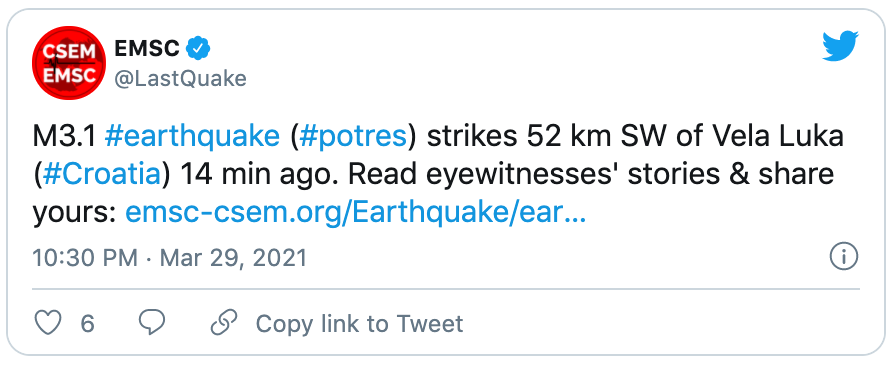
"There was a rumble, it shook briefly but strongly," said one witness. "It rumbled for 6-7 seconds and shook briefly," said another. "I was really scared, it shook good," read another. Split singer Marijan Ban even took to Twitter to confirm that he felt the quake, too.
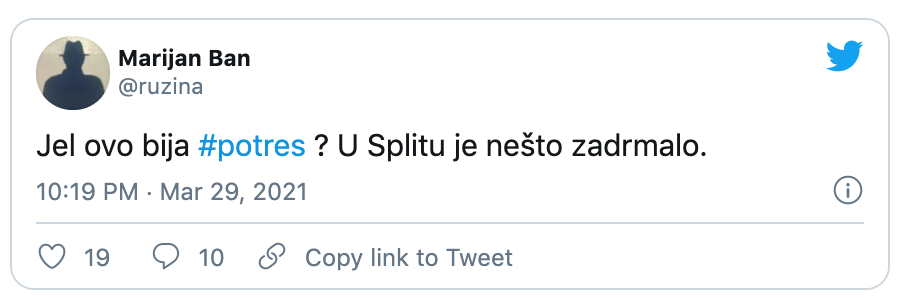
The first report of the earthquake arrived at 10:20 pm from Kaštel Sućurac. It was the ninth earthquake in the Adriatic Sea in the last 56 hours, the EMSC reported.
A bit later, seismologists from the Seismological Service announced that at 22:17 they recorded an earthquake with an epicenter 3 km south-southeast of Maovici near Vrlika, meaning that the Split area was shaken by three earthquakes just a few minutes apart!

Over the last few days, several slightly stronger earthquakes have been recorded in the Adriatic Sea, in the waters nea Split. The strongest so far was 5.5-magnitude on the Richter scale.
None of these earthquakes have been strong enough to cause any damage.
The EMSC was established in 1975 on the European Seismological Commission's recommendation, given that the Euro-Mediterranean region showed potentially dangerous seismic activity. It is headquartered in Bruyères le Châtel, a municipality on the southern outskirts of Paris, and is a non-profit NGO.
EMSC uses a unique earthquake detection system thanks to the collaborative work from eyewitnesses and data collection from seismic institutes provided by 85 institutes as members from 56 different countries, thus giving users real-time earthquake information for seismic events.
To read more about news in Croatia, follow TCN's dedicated page.
Jadrolinija Shipping Company Adds 54th Ferry to its Fleet
ZAGREB, 11 March, 2021 - The Jadrolinija shipping company added the 54th vessel to its fleet on Thursday - a ferry with a capacity of 600 passengers and 140 vehicles, the company announced in a press release.
The Lošinj ferry, built by the Kraljevica shipyard, will operate between Lopar on the island of Rab and Valbiska on the island of Krk in the northern Adriatic.
The vessel is 97.85 metres long and 15 metres wide and develops a speed of 13 knots.
CEO David Sopta said that fleet development was the most important point in Jadrolinija's development strategy over the last four years. He added that renewing the fleet was necessary for the company to maintain its leading position in the Adriatic and to provide islanders with a more comfortable service.
For more about travel in Croatia, follow TCN's dedicated page.


